Seeing Impacts of Park Design Strategies on Local Economy through Big Data: A Case Study of Gyeongui Line Forest Park in Seoul
Abstract
1. Introduction
2. Literature Review
2.1. Benefits of Urban Parks
2.1.1. Economic Benefits
2.1.2. Social Benefits
2.2. Big Data Analytics in Urban Studies
3. Methods
3.1. Study Site
3.2. Data Collection
3.3. Data Analytics
4. Results
4.1. Design Features of Each Section
4.2. Age of the Card Users Near the Park
4.3. Impacts of the Park on Local Economy
5. Conclusions
Funding
Conflicts of Interest
References
- Loughran, K. Parks for profit: The high line, growth machines, and the uneven development of urban public spaces. City Community 2014, 13, 49–68. [Google Scholar] [CrossRef]
- Brander, L.M.; Koetse, M.J. The value of urban open space: Meta-analyses of contingent valuation and hedonic pricing results. J. Environ. Manag. 2011, 92, 2763–2773. [Google Scholar] [CrossRef] [PubMed]
- Freeman, A.M. The hedonic price approach to measuring demand for neighborhood characteristics. In The Economics of Neighborhood; Elsevier: Amsterdam, The Netherlands, 1979; pp. 191–217. [Google Scholar]
- Morancho, A.B. A hedonic valuation of urban green areas. Landsc. Urban Plan. 2003, 66, 35–41. [Google Scholar] [CrossRef]
- Ovington, J.D.; Groves, K.W.; Stevens, P.R.; Tanton, M.T. Changing Scenic Values and Tourist Carrying Capacity of National Parks. An Australian Example. Landsc. Plan. 1974, 1, 35–50. [Google Scholar] [CrossRef]
- Rysman, M. An Empirical Analysis of Payment Card Usage*. J. Ind. Econ. 2007, 55, 1–36. [Google Scholar] [CrossRef]
- Medina, J.F.; Chau, C.-T. Credit Card Usage Behavior between Anglos and Hispanics. Hisp. J. Behav. Sci. 1998, 20, 429–447. [Google Scholar] [CrossRef]
- Rogers, E.M. Diffusion of Innovations; Simon and Schuster: New York, NY, USA, 2010. [Google Scholar]
- Akbari, H.; Pomerantz, M.; Taha, H. Cool surfaces and shade trees to reduce energy use and improve air quality in urban areas. Sol. Energy 2001, 70, 295–310. [Google Scholar] [CrossRef]
- Tempesta, T. Benefits and Costs of Urban Parks: A Review; Aestimum: Florence, Italy, 2015; pp. 127–143. [Google Scholar] [CrossRef]
- Lockwood, M.; Tracy, K. Nonmarket Economic Valuation of an Urban Recreation Park. J. Leis. Res. 1995, 27, 155–167. [Google Scholar] [CrossRef]
- More, T.A.; Stevens, T.; Allen, P.G. Valuation of urban parks. Landsc. Urban Plan. 1988, 15, 139–152. [Google Scholar] [CrossRef]
- Stringer, L.C.; Dougill, A.J.; Fraser, E.; Hubacek, K.; Prell, C.; Reed, M.S. Unpacking “participation” in the adaptive management of social–ecological systems: A critical review. Ecol. Soc. 2006, 11. [Google Scholar] [CrossRef]
- Wolch, J.R.; Byrne, J.; Newell, J.P. Urban green space, public health, and environmental justice: The challenge of making cities ‘just green enough’. Landsc. Urban Plan. 2014, 125, 234–244. [Google Scholar] [CrossRef]
- Boardman, A.E.; Greenberg, D.H.; Vining, A.R.; Weimer, D.L. Cost-Benefit Analysis: Concepts and Practice; Cambridge University Press: Cambridge, UK, 2017. [Google Scholar]
- Turner, R.K.; Morse-Jones, S.; Fisher, B. Ecosystem valuation. Ann. N. Y. Acad. Sci. 2010, 1185, 79–101. [Google Scholar] [CrossRef] [PubMed]
- Adger, N.; Whitby, M. Accounting for the impact of agriculture and forestry on environmental quality. Eur. Econ. Rev. 1991, 35, 629–641. [Google Scholar] [CrossRef]
- Allen, P.G.; Stevens, T.H.; More, T.A. Measuring the economic value of urban parks: A caution. Leis. Sci. 1985, 7, 467–477. [Google Scholar] [CrossRef]
- Spangler, M.B. A critique of methods in the quantification of risks, costs and benefits in the societal choice of energy options. Ann. Nucl. Energy 1983, 10, 119–151. [Google Scholar] [CrossRef]
- Acar, C.; Acar, H.; Eroğlu, E. Evaluation of ornamental plant resources to urban biodiversity and cultural changing: A case study of residential landscapes in Trabzon city (Turkey). Build. Environ. 2007, 42, 218–229. [Google Scholar] [CrossRef]
- Cervinka, R.; Röderer, K.; Hämmerle, I. Evaluation of Hospital Gardens and Implications for Design: Benefits from Environmental Psychology for Architecture and Landscape Planning. J. Archit. Plan. Res. 2014, 31, 43–56. [Google Scholar]
- Cranshaw, J.; Schwartz, R.; Hong, J.; Sadeh, N. The livehoods project: Utilizing social media to understand the dynamics of a city. In Proceedings of the Sixth International AAAI Conference on Weblogs and Social Media, Dublin, Ireland, 1 June 2012. [Google Scholar]
- Hossini, S.B.; Azemati, S.; Elyasi, N.; Mozaffar, F. The Effect of the Vitality Level of University Campuses on Increasing Social Interactions and Makin. Procedia Soc. Behav. Sci. 2015, 170, 225–233. [Google Scholar] [CrossRef]
- Dwyer, J.F.; Kelly, J.R.; Bowes, M.D. Improved Procedures for Valuation of the Contribution of Recreation to National Economic Development; University of Illinois at Urbana-Champaign: Champaign, IL, USA, 1977. [Google Scholar]
- Tajima, K. New estimates of the demand for urban green space: Implications for valuing the environmental benefits of Boston’s big dig project. J. Urban Aff. 2003, 25, 641–655. [Google Scholar] [CrossRef]
- Levere, M. The Highline Park and Timing of Capitalization of Public Goods. Working Paper. 2014. Available online: https://www.semanticscholar.org/paper/The-High-Line-Park-and-Timing-of-Capitalization-of-Levere/cfaf23350cd0c3eeca0b4d5a3425268e70e87c02#citing-papers (accessed on 18 August 2020).
- Kang, C.D.; Cervero, R. From elevated freeway to urban greenway: Land value impacts of the CGC project in Seoul, Korea. Urban Stud. 2009, 46, 2771–2794. [Google Scholar] [CrossRef]
- Barbosa, O.; Tratalos, J.A.; Armsworth, P.R.; Davies, R.G.; Fuller, R.A.; Johnson, P.; Gaston, K.J. Who benefits from access to green space? A case study from Sheffield, UK. Landsc. Urban Plan. 2007, 83, 187–195. [Google Scholar] [CrossRef]
- Chiesura, A. The role of urban parks for the sustainable city. Landsc. Urban Plan. 2004, 68, 129–138. [Google Scholar] [CrossRef]
- Ulrich, R.S. Natural Versus Urban Scenes: “Some Psychophysiological Effects”. Environ. Behav. 1981, 13, 523. [Google Scholar] [CrossRef]
- Ulrich, R.S.; Simons, R.F.; Losito, B.D.; Fiorito, E.; Miles, M.A.; Zelson, M. Stress recovery during exposure to natural and urban environments. J. Environ. Psychol. 1991, 11, 201–230. [Google Scholar] [CrossRef]
- Coley, R.L.; Sullivan, W.C.; Kuo, F.E. Where Does Community Grow?: The Social Context Created by Nature in Urban Public Housing. Environ. Behav. 1997, 29, 468–494. [Google Scholar] [CrossRef]
- Kuo, F.E.; Bacaicoa, M.; Sullivan, W.C. Transforming Inner-City Landscapes: Trees, Sense of Safety, and Preference. Environ. Behav. 1998, 30, 28–59. [Google Scholar] [CrossRef]
- Peters, K.; Elands, B.; Buijs, A. Social interactions in urban parks: Stimulating social cohesion? Urban For. Urban Green. 2010, 9, 93–100. [Google Scholar] [CrossRef]
- Tu, W.; Cao, J.; Yue, Y.; Shaw, S.-L.; Zhou, M.; Wang, Z.; Chang, X.; Xu, Y.; Li, Q. Coupling mobile phone and social media data: A new approach to understanding urban functions and diurnal patterns. Int. J. Geogr. Inf. Sci. 2017, 31, 2331–2358. [Google Scholar] [CrossRef]
- Chen, W.Y.; Li, X. Cumulative impacts of polluted urban streams on property values: A 3-D spatial hedonic model at the micro-neighborhood level. Landsc. Urban Plan. 2017, 162, 1–12. [Google Scholar] [CrossRef]
- e Silva, M.D.F.M.; Calijuri, M.L.; de Sales, F.J.F.; de Souza, M.H.B.; Lopes, L.S. Integration of technologies and alternative sources of water and energy to promote the sustainability of urban landscapes. Resour. Conserv. Recycl. 2014, 91, 71–81. [Google Scholar] [CrossRef]
- Oteros-Rozas, E.; Martín-López, B.; Fagerholm, N.; Bieling, C.; Plieninger, T. Using social media photos to explore the relation between cultural ecosystem services and landscape features across five European sites. Ecol. Indic. 2018, 94, 74–86. [Google Scholar] [CrossRef]
- Batty, M.; Axhausen, K.W.; Giannotti, F.; Pozdnoukhov, A.; Bazzani, A.; Wachowicz, M.; Ouzounis, G.; Portugali, Y. Smart cities of the future. Eur. Phys. J. Spec. Top. 2012, 214, 481–518. [Google Scholar] [CrossRef]
- Kwate, N.O.A.; Cueva, S.; Campbell, A. Methodological issues in measuring neighborhood-level exposures. In Proceedings of the Annals of Behavioral Medicine; Springer: New York, NY, USA, 2010; Volume 39, p. 178. [Google Scholar]
- Curtis, I.A. Valuing ecosystem goods and services: A new approach using a surrogate market and the combination of a multiple criteria analysis and a Delphi panel to assign weights to the attributes. Ecol. Econ. 2004, 50, 163–194. [Google Scholar] [CrossRef]
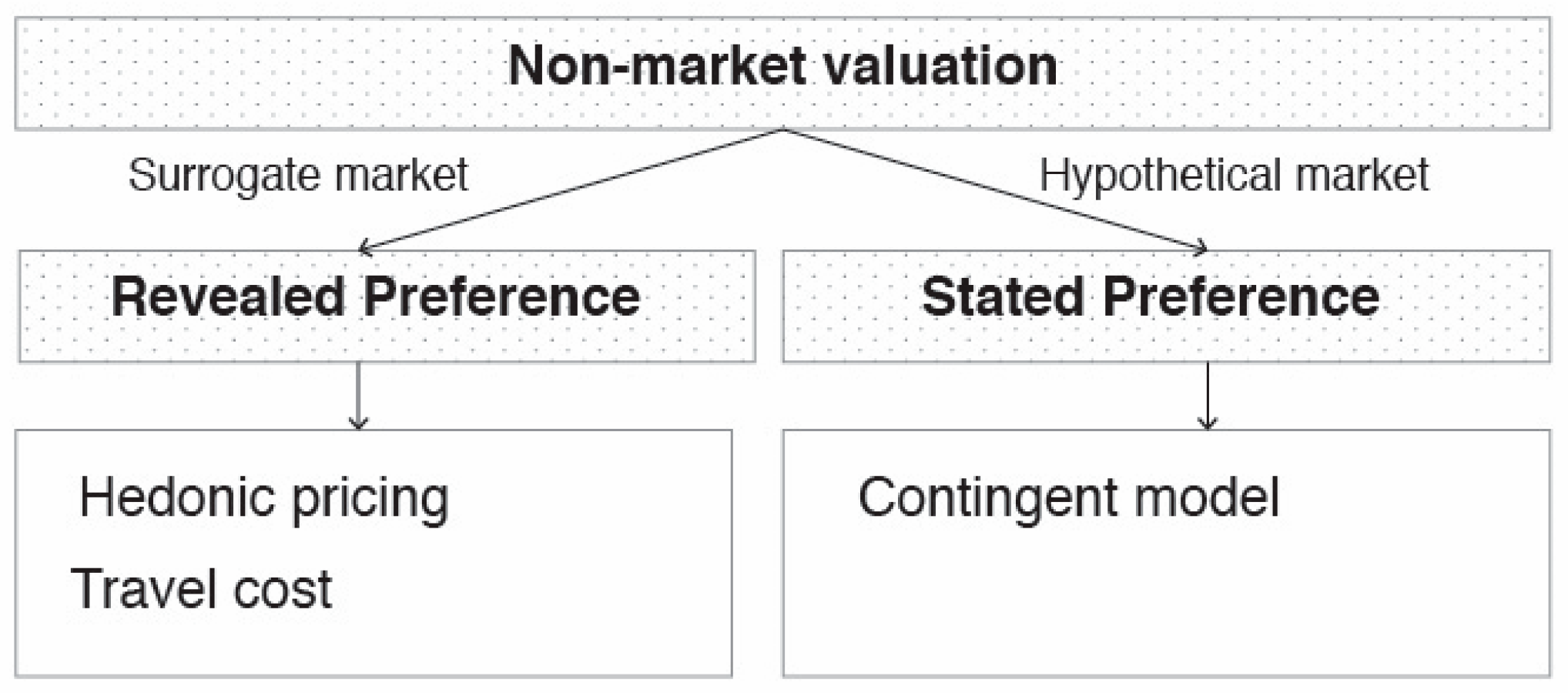
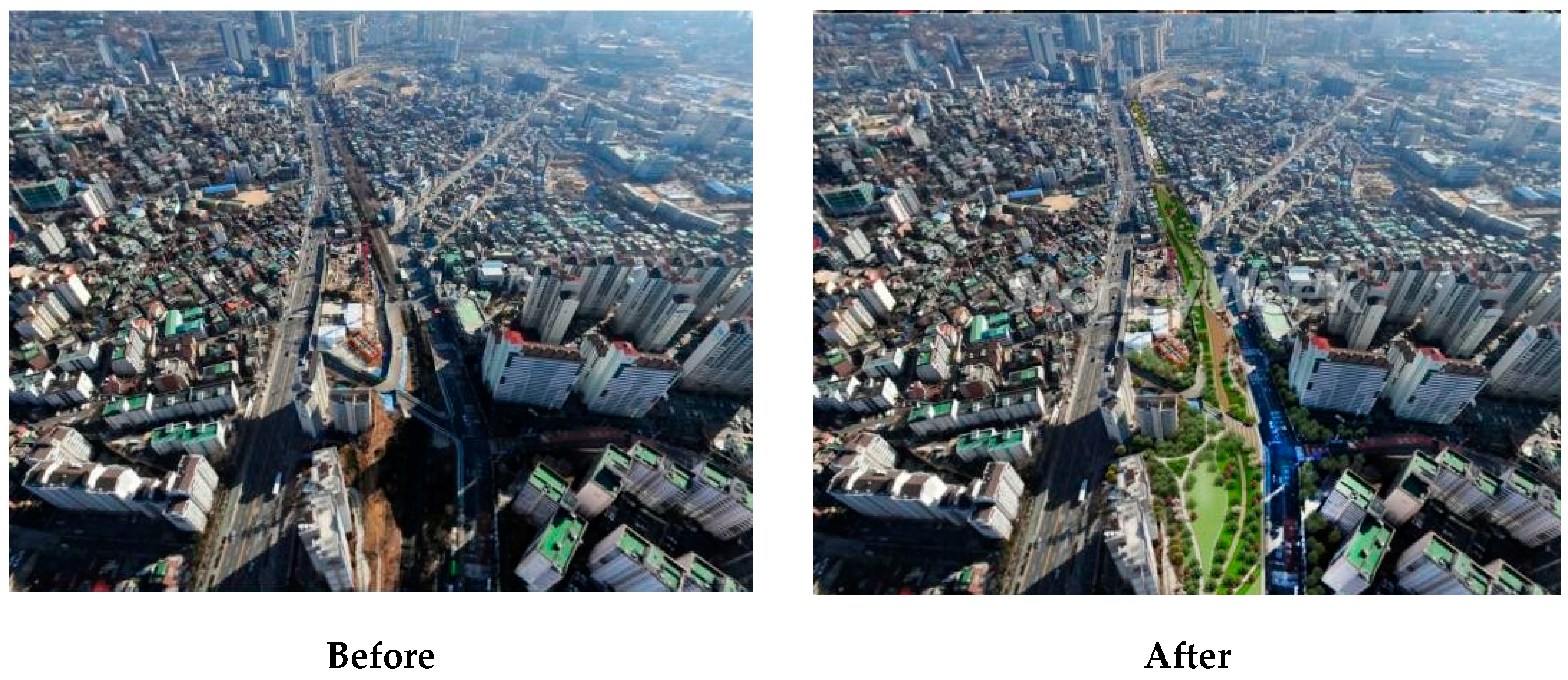
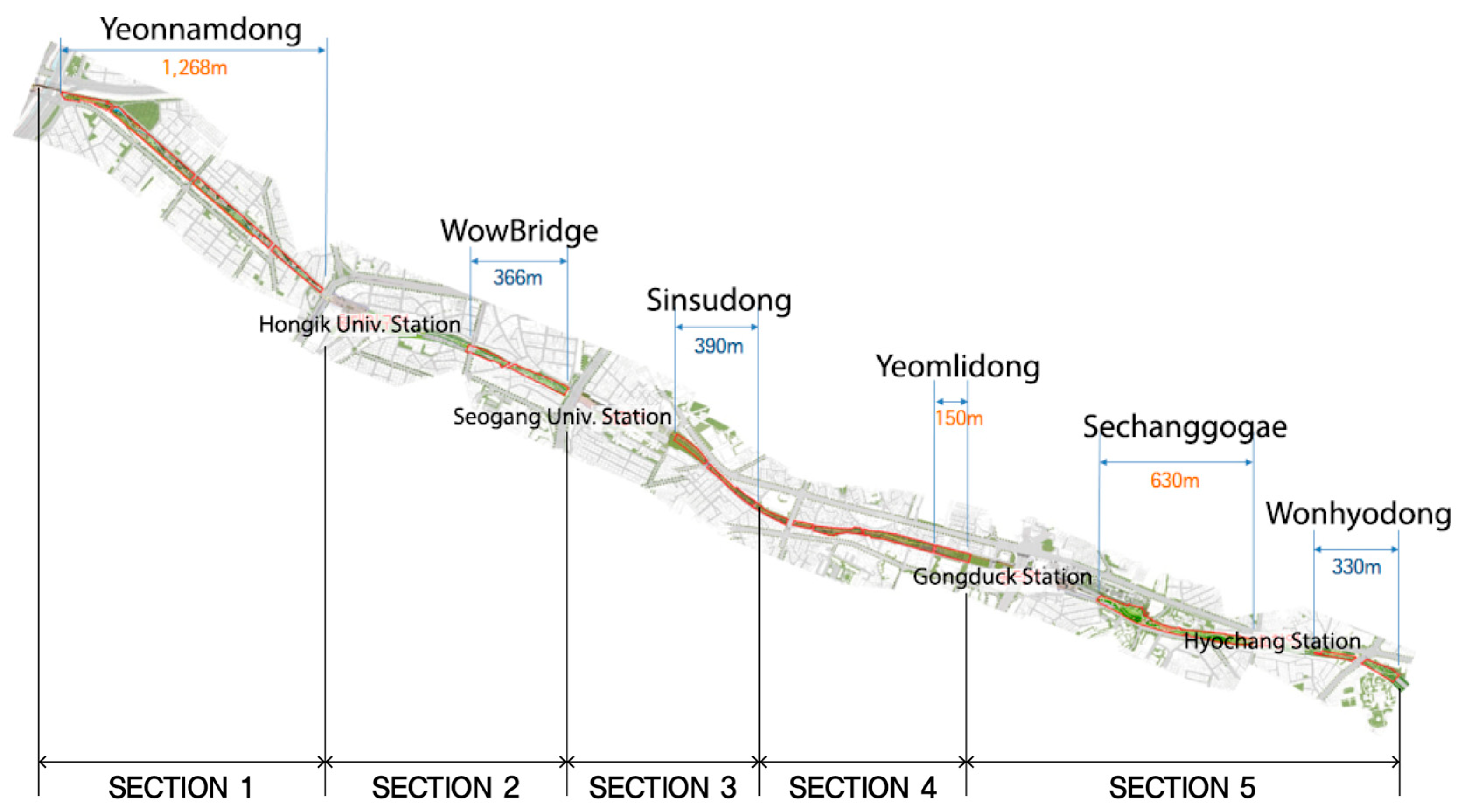
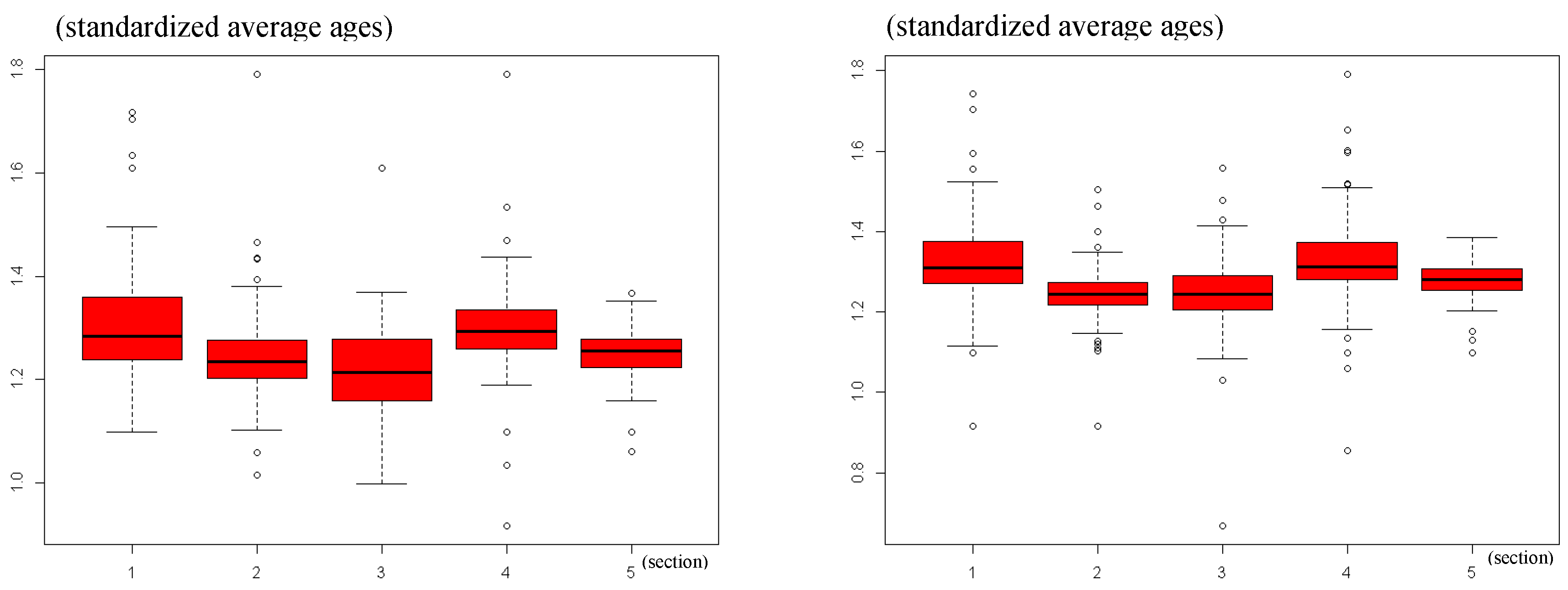
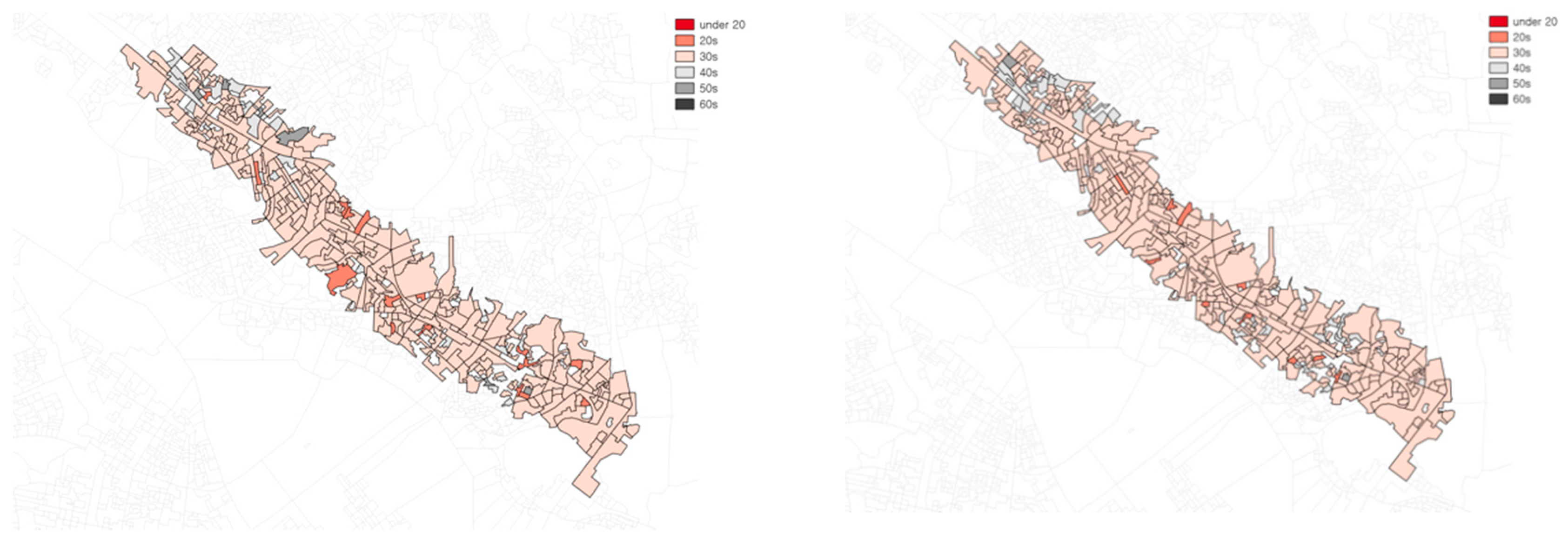
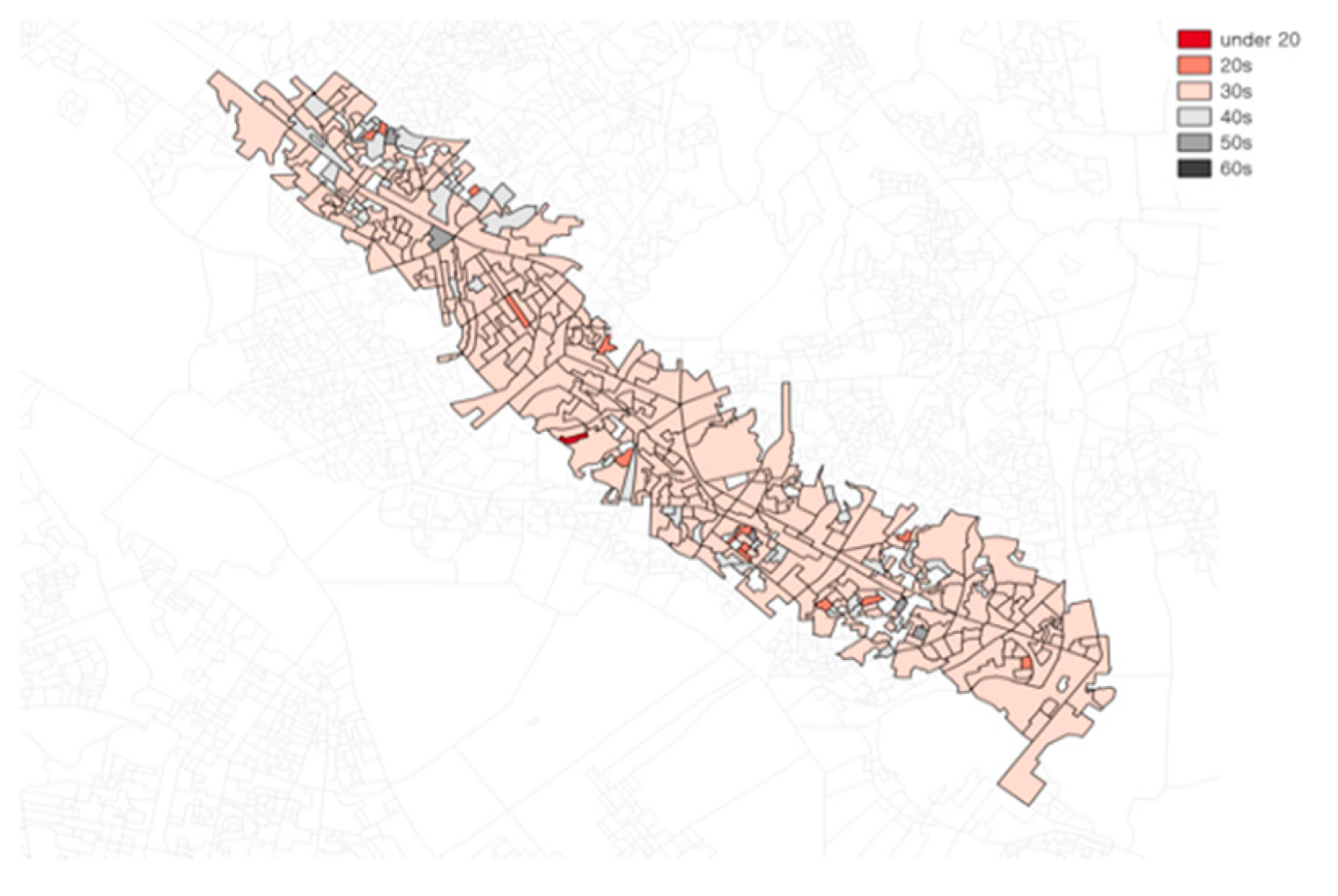
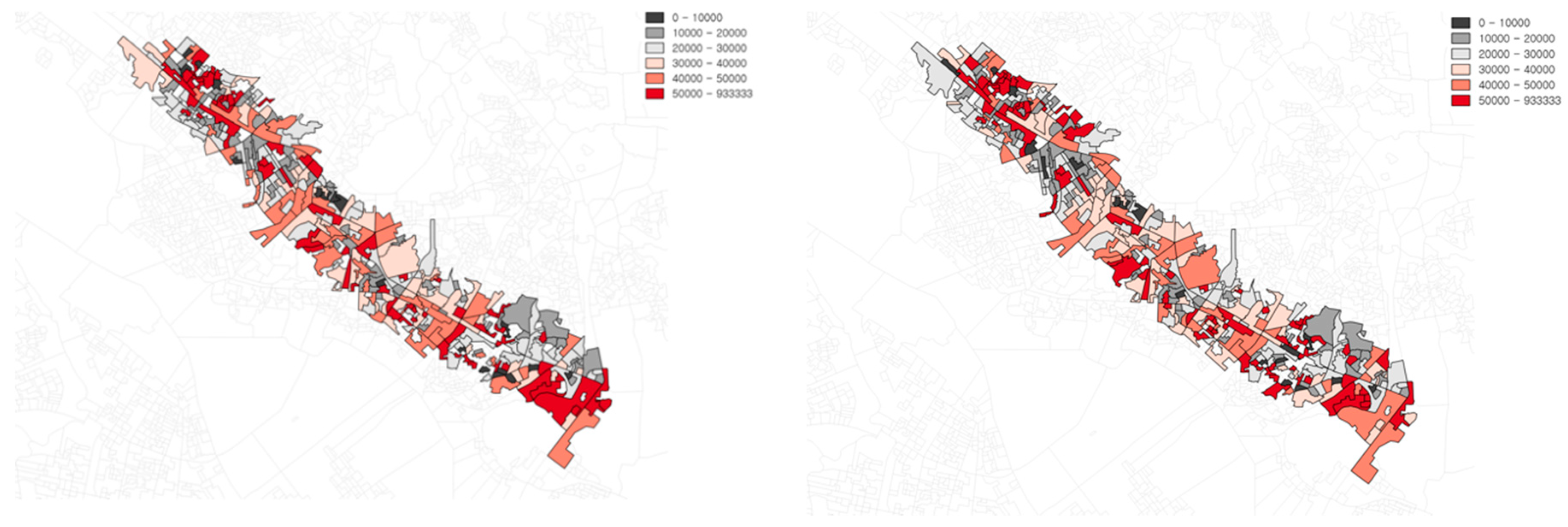
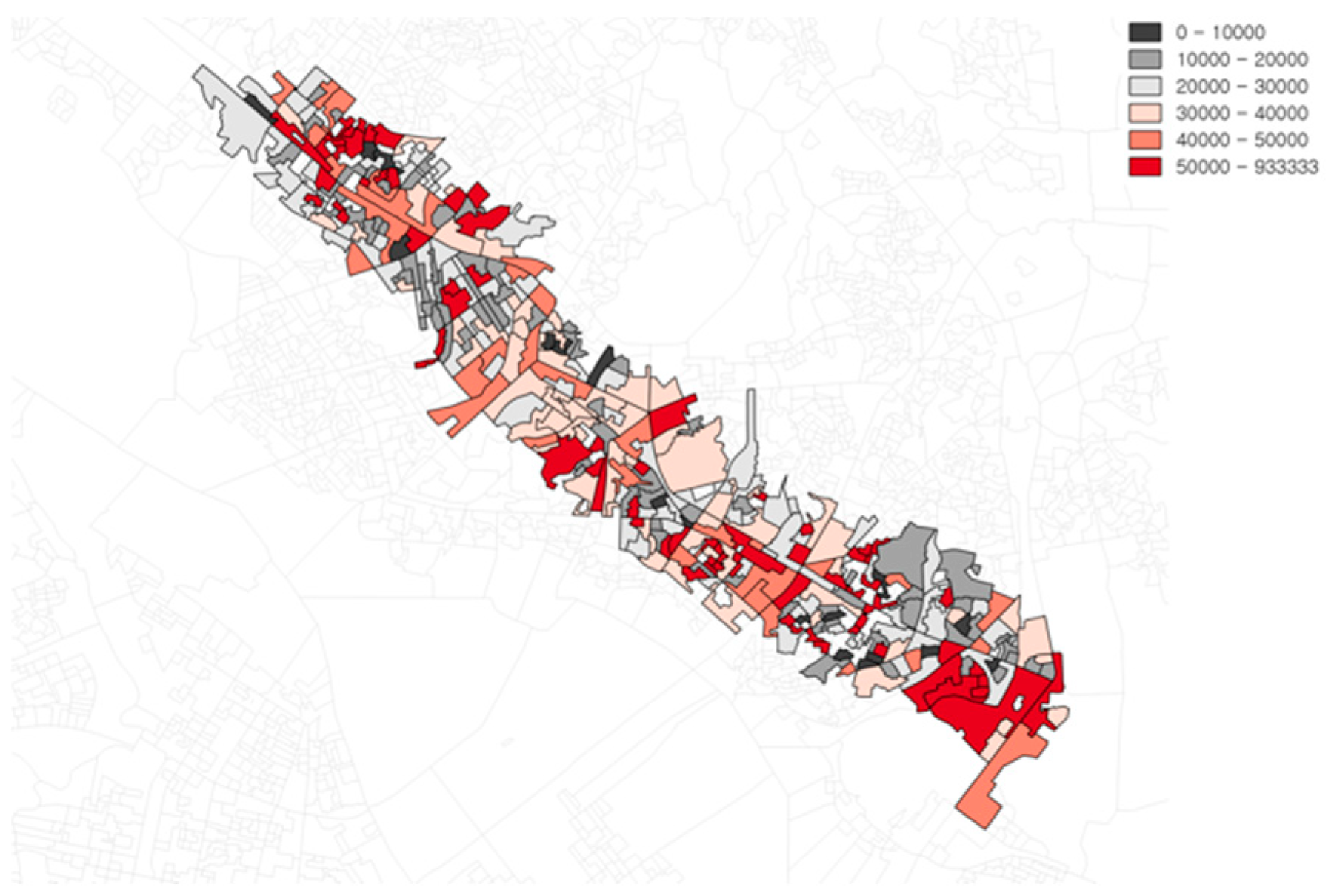

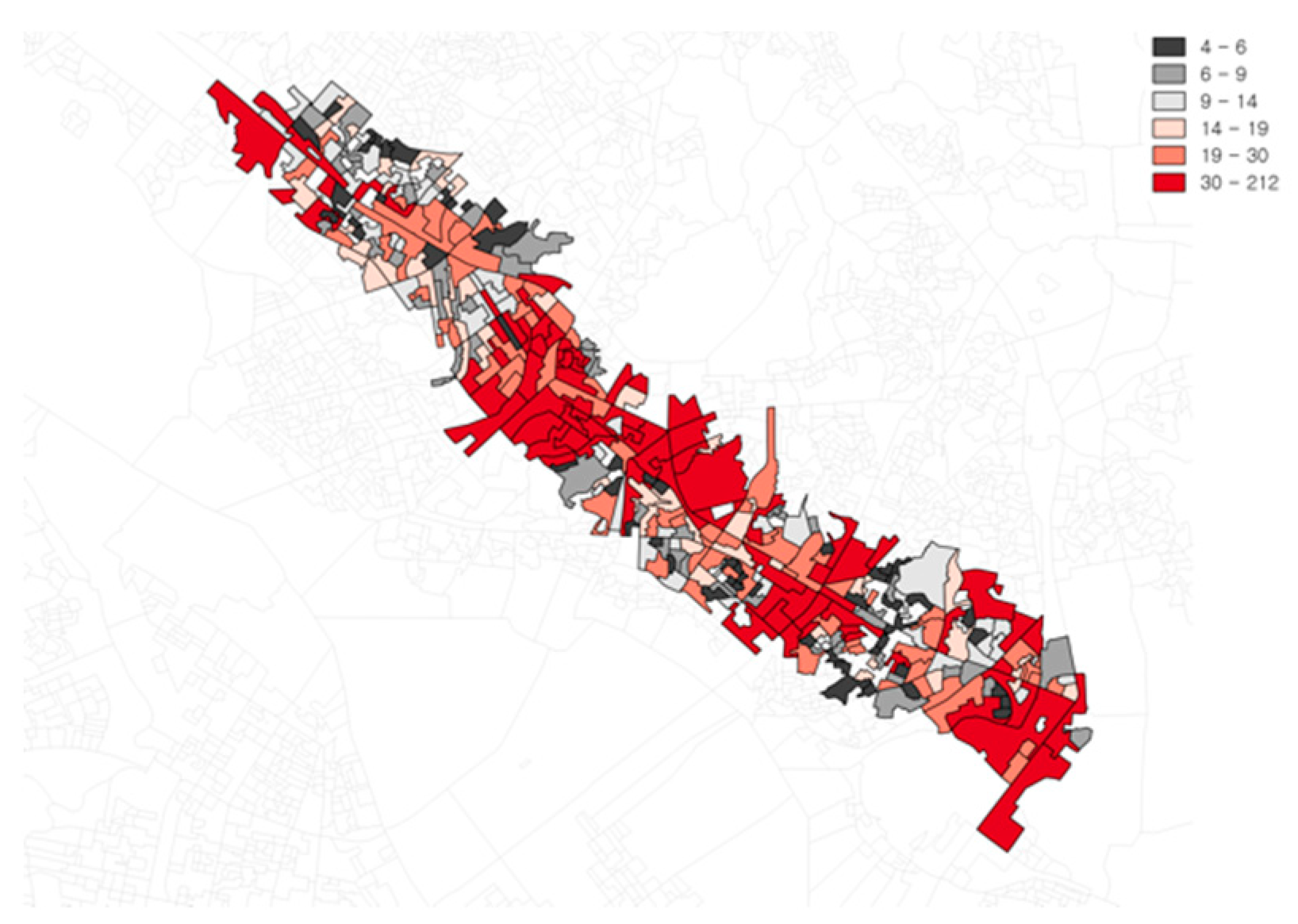
| No. | Photo | Context | In-Out |
|---|---|---|---|
| 1 | 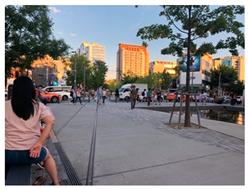 | 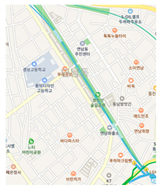 | openness |
| 2 |  | 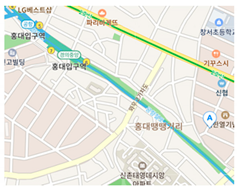 | Semi openness |
| 3 | 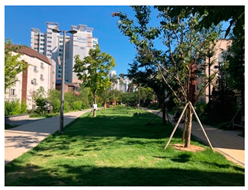 | 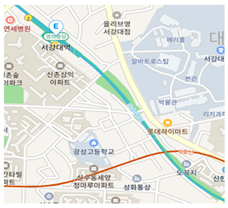 | enclosed |
| 4 | 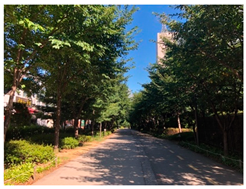 | 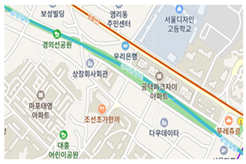 | enclosed |
| 5 |  | 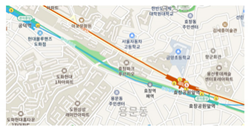 | Semi openness |
| Section | 2015 | 2016 | 2017 |
|---|---|---|---|
| 1 | 3.74 | 3.85 | 3.80 |
| 2 | 3.49 | 3.46 | 3.47 |
| 3 | 3.40 | 3.44 | 3.49 |
| 4 | 3.69 | 3.72 | 3.79 |
| 5 | 3.48 | 3.54 | 3.58 |
| Section | 2015 | 2016 | 2017 |
|---|---|---|---|
| 1 | 68,393 | 87,540 | 94,470 |
| 2 | 42,396 | 32,761 | 32,559 |
| 3 | 38,586 | 46,536 | 42,284 |
| 4 | 79,939 | 91,589 | 78,183 |
| 5 | 49,103 | 56,504 | 61,748 |
| Section | 2015 | 2016 | 2017 |
|---|---|---|---|
| 1 | 349.0 | 413.6 | 424.8 |
| 2 | 605.0 | 746.3 | 731.0 |
| 3 | 942.0 | 1068.7 | 1038.3 |
| 4 | 621.0 | 655.2 | 619.9 |
| 5 | 701.0 | 788.1 | 739.6 |
© 2020 by the author. Licensee MDPI, Basel, Switzerland. This article is an open access article distributed under the terms and conditions of the Creative Commons Attribution (CC BY) license (http://creativecommons.org/licenses/by/4.0/).
Share and Cite
Sim, J. Seeing Impacts of Park Design Strategies on Local Economy through Big Data: A Case Study of Gyeongui Line Forest Park in Seoul. Sustainability 2020, 12, 6722. https://doi.org/10.3390/su12176722
Sim J. Seeing Impacts of Park Design Strategies on Local Economy through Big Data: A Case Study of Gyeongui Line Forest Park in Seoul. Sustainability. 2020; 12(17):6722. https://doi.org/10.3390/su12176722
Chicago/Turabian StyleSim, Jisoo. 2020. "Seeing Impacts of Park Design Strategies on Local Economy through Big Data: A Case Study of Gyeongui Line Forest Park in Seoul" Sustainability 12, no. 17: 6722. https://doi.org/10.3390/su12176722
APA StyleSim, J. (2020). Seeing Impacts of Park Design Strategies on Local Economy through Big Data: A Case Study of Gyeongui Line Forest Park in Seoul. Sustainability, 12(17), 6722. https://doi.org/10.3390/su12176722




